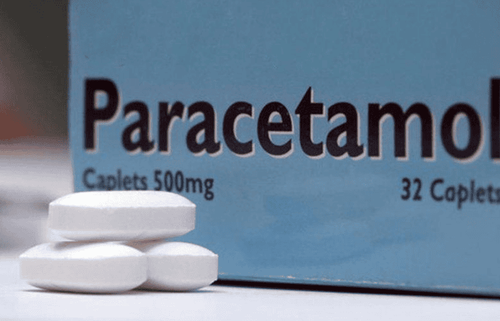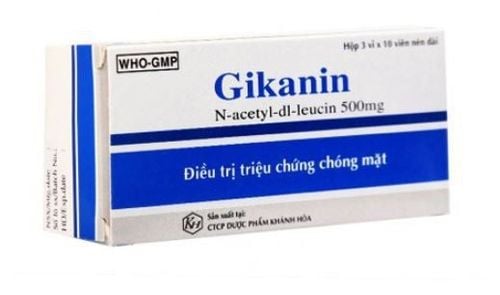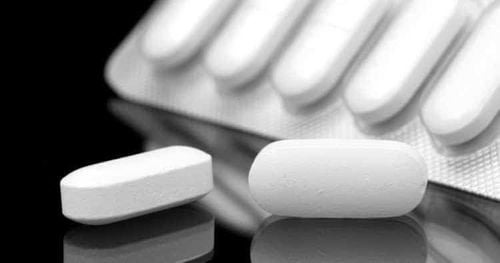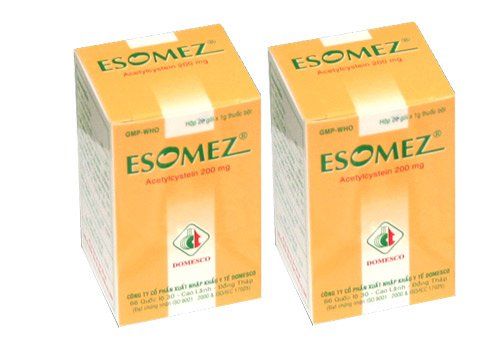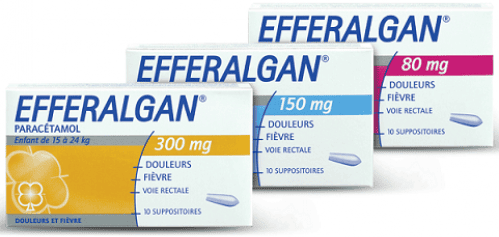This is an automatically translated article.
The article was consulted with Specialist Doctor I Huynh Kim Long - Emergency Resuscitation Doctor - Emergency Resuscitation Department - Vinmec Danang International General Hospital.Medicines containing the active ingredient paracetamol, which have analgesic and antipyretic effects, are widely used and can be purchased at pharmacies without a prescription by a doctor. However, paracetamol can still cause poisoning when patients abuse to self-medicate with repeated overdose levels.
1. When is paracetamol poisoning?
Medicines for treating colds, flu, pain relief, anti-inflammatory, antipyretic, runny nose all contain paracetamol. This is a drug that can be bought at pharmacies without a prescription from a doctor and there is no limit to the amount of each purchase. It is for this reason that the number of patients hospitalized due to paracetamol poisoning is increasing. This is a common type of poisoning that is easy to miss and is not diagnosed in time.
Medicines containing paracetamol will reach peak concentrations 4 hours after taking. According to the sulphation and glucuronide pathways, 90% of paracetamol is metabolized in the liver, the remaining 10% is converted to N-acetyl-p-benzoquinoneimine (NAPQI) by the cytochrome P-450 enzyme system. The cytochrome P-450 enzyme system is located mainly in the liver.
Using paracetamol at a dose of 150 mg/kg body weight will cause poisoning. In an adult weighing 50 kg, a dose of 7.5 grams of paracetamol taken once may lead to toxic hepatitis - This case, if not treated promptly, can lead to death. In patients with pre-existing chronic liver disease, lower doses may also cause hepatocellular damage. In case of chronic viral hepatitis, just taking 4 grams of paracetamol within 40 hours has caused toxic hepatitis.
Taking too much paracetamol makes the sulphation process saturated and toxic to the liver. NAPQI binds to the membrane of hepatocytes, in excess of the allowable amount NAPQL will damage the lipid bilayer of hepatocytes. The liver contains a substance called Glutathione - this is the main antioxidant, this substance has the effect of binding and neutralizing NAPQI. Paracetamol poisoning occurs leading to depletion of glutathione and liver damage. Region 3 of the liver - The center of the lobules is the area with the main amount of damaged liver cells, because in this area the concentration of oxidants is the largest. In case of very severe paracetamol poisoning, necrosis may spread to areas 1 and 2 of the liver. NAPQL also follows the mechanism of liver damage that leads to tubular necrosis.
2. Manifestations of paracetamol poisoning

When patients overdose on paracetamol, after 1-3 days, the symptoms of poisoning are really clear with the most common condition being hepatitis and liver failure. Manifestations of paracetamol poisoning are divided into 4 stages:
Stage 1 after taking from half an hour to 24 hours, with manifestations of anorexia, nausea, vomiting, sweating, irritability, may increase GOT or GPT; Phase 2 after taking from 24 hours to 72 hours, with symptoms of anorexia, nausea, vomiting less than phase 1, maybe right upper quadrant pain. GOT, GPT now continues to increase. Bilirubin may increase. Prothrombin rates may decrease. Renal function may decline; Stage 3 after drinking from 72 - 96 hours, at this time hepatocellular necrosis occurs, with jaundice, coagulopathy, renal failure and hepatic encephalopathy. Liver biopsy showed central lobular necrosis. Possible death from multi-organ failure; Stage 4 after taking from 4-14 days: At this stage, if the patient is still alive, the liver function will recover completely and after 30 days the liver tissue will heal again. Severe cases of poisoning may last longer.
3. Treatment of paracetamol poisoning
When a patient is admitted to the hospital in an emergency, the first thing the doctor needs to do is stabilize the patient's condition, especially in respiratory, circulatory and neurological conditions.
3.1 Remove toxins from the body If the patient has taken paracetamol-containing medicine within 1 hour, then measures to induce vomiting will be applied. If the patient takes the drug within 6 hours, it is necessary to perform gastric lavage. After the patient was induce vomiting or gastric lavage, activated charcoal at a dose of 1g/kg, combined with an equivalent dose of sorbitol.
3.2 Use of antidote Patients who are treated early, have not yet had hepatitis or mild hepatitis will be prescribed an antidote that is N-acetylcysteine, NAC. This is a simple but highly effective antidote, helping to avoid or improve hepatitis, liver failure, reduce the rate of cerebral edema, reduce the use of vasopressors and reduce the possibility of death.
3.3 Some other treatment measures Rehydration, electrolytes for the patient; Patients with poor appetite due to vomiting can use anti-emetics, 10-20% glucose infusion to nourish; If hepatitis occurs, supportive treatment will follow as a general rule; Cases of acute renal failure will be treated according to general principles.
4. Appropriate dose of paracetamol
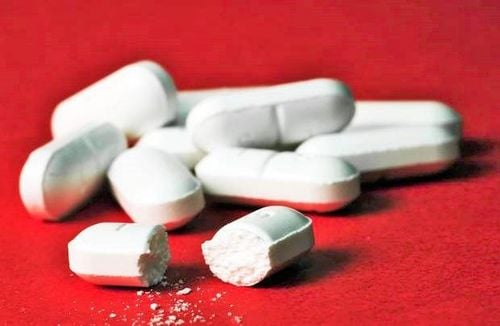
Use the drug carefully read the instructions for use from the manufacturer or the advice of the prescribing doctor, take the correct dose and drink more water. The drug contains the main ingredient paracetamol, the recommended dose for adults is 4-6 tablets/day (paracetamol content 500 mg/tablet). It is best to take only 4 tablets in 24 hours. If the patient, after using paracetamol according to the prescribed dose, does not improve the fever or reduce pain, the patient should be taken to the hospital for support by other measures. Do not increase the dose on your own. paracetamol.
Paracetamol poisoning is a common emergency, the sooner the patient goes to the medical facility, the more effective the treatment will be.
Vinmec International General Hospital has a team of doctors and emergency nurses at the Emergency Department who are highly trained and methodical, able to receive and urgently handle severe cases. Continue to coordinate monitoring and active medical treatment in the intensive care unit in combination with modern mechanical interventions such as: plasma dialysis machine for acute liver failure cases, continuous dialysis for patients with acute liver failure. acute renal failure (Prismaflex, Presenius), GE Carescape R860 ventilator...
Please dial HOTLINE for more information or register for an appointment HERE. Download MyVinmec app to make appointments faster and to manage your bookings easily.





